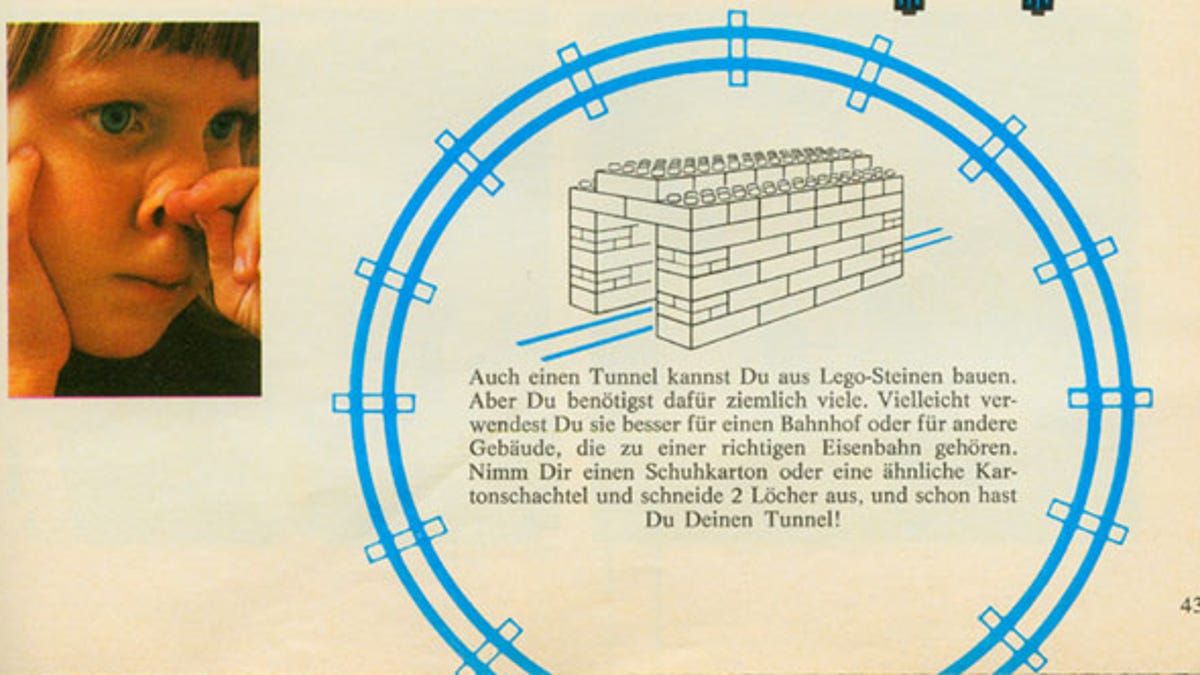Lego promoted do-it-yourself in 1971
In its catalog, the toy company suggested using something other than its own products to complete a task.

With Web 2.0 in full ascent and the widely accepted view that do-it-yourself, or DIY, is the way to get users or audiences engaged these days, we tend to forget that it's a relatively new phenomenon, at least from the corporate perspective.
For every Second Life or YouTube that exists today, that encourages users to create their own content and to potentially do so without spending any money on their corporate parents' products, there are endless examples of companies going out of their way in the past to make sure you do anything but that.
But way back in 1971, when most people had never even heard the term "do-it-yourself," a little paragraph hidden in the middle of the German edition of the Lego catalog promoted that very concept.
On page 43 of that catalog, according to Chris Hecker, a technologist who currently works for Electronic Arts, there was a tidbit that seems oh-so-juicy to someone with today's perspective.
It was instructions for building a tunnel. But as the translation from German below indicates, Lego wasn't interested solely in customers spending their hard-earned Deutschmarks on their product:
"You can...build a tunnel from Lego bricks. But you'll need quite a few of them," the catalog reads. "Maybe you better use them for a train station or other buildings that are part of a real railroad. Take a shoe box or a similar card board box and cut out two holes, and there you've got your tunnel already."
True enough: Lego was saying that you could use something besides its bricks to make something. Today, this is a common instruction. But back in 1971, it was hardly so.
As Hecker puts it on his personal site, "Yes, this catalog for a commercial product just told you not to buy more of its product, it told you how to conserve, improvise, Do It Yourself, and work around a problem with a shoe box. Those were the good old days."
Indeed. Now I can only wonder what the world would look like today if more companies had fostered that approach in 1971. We'd probably be well on our way to Web 4.0 by now.

